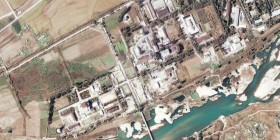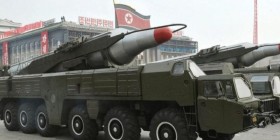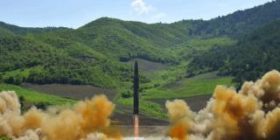North Korea launched a long-range rocket on Sunday in defiance against sanction threats violating UN resolutions. The launch
sparked a rage from an international community already determined to punish Pyongyang for a nuclear test in January.
While South Korea’s Yonhap news agency had earlier suggested the launch may have failed, North Korea’s state television later
confirmed on Sunday that the long-range rocket launch, ordered by leader Kim Jong Un to put a satellite into space, was a
“complete success”.
Pyongyang insists its space programme is purely scientific, but most of the world views its rocket launches as disguised ballistic
missile tests aimed at developing a weapons delivery system capable of striking the US mainland.
North Korea intends to continue to launch rockets carrying satellites into space, Russia’s Interfax news agency quoted the
North Korean embassy in Moscow as saying in a statement on Sunday.
“The state agency on space exploration, following the policy of the Workers’ Party of Korea on giving priority to science and
technology, will continue to launch more man-made satellites,” the embassy said in a statement, according to Interfax.
A special announcement from Pyangyong will be made at 0330 GMT, according to North Korea state television.
Meanwhile, the launch sparked rage among world powers with US, China and Japan reacting to the incident.
A US defence official said the launch vehicle “appears to have reached space”. Condemnation was swift, with the United States
calling the launch “destabilising” and provocative.
Japanese Prime Minister Shinzo Abe also slammed the launch as “absolutely intolerable.”
In New York, diplomats said the UN Security Council would meet in emergency session later on Sunday.
Tough response urged
South Korean President Park Geun-Hye said the Council should respond quickly with “strong punitive measures” against what
she called a grave challenge to global peace and security. The rocket, carrying an Earth observation satellite, took off at
around 9.00 am Pyongyang time (0030 GMT), according to the South Korean defence ministry which was monitoring the
launch site.
Its pre-orbital flight arc was planned to traverse the Yellow Sea and further south to the Philippine Sea, with both South Korea
and Japan threatening to shoot it down if it encroached on their territory.
Multiple UN Security Council resolutions proscribe North Korea’s development of its ballistic missile programme.
Despite Pyongyang’s insistence on a peaceful space mission, its rockets are considered dual-use technology with both civil and
military applications.
The United States, along with allies like South Korea and Japan, had warned Pyongyang it would pay a heavy price for
pushing ahead with launch, but analysts said the North’s timing was carefully calculated to minimise the repercussions.
Good timing?
With the international community still struggling to find a united response to the North’s January 6 nuclear test, the rocket
launch — while provocative — is unlikely to substantially up the punitive ante.“North Korea likely calculates that a launch so
soon after the nuclear test will probably only incrementally affect the UN sanctions arising from that test,” said Alison Evans a
senior analyst at IHS Jane’s.
North Korea’s chief diplomatic ally, China, has been resisting the US push for tougher sanctions against Pyongyang.
While infuriated by North Korea’s refusal to curb its nuclear ambitions, China’s overriding concern is avoiding a collapse of the
regime in Pyongyang and the possibility of a US-allied unified Korea on its border.
North Korea last launched a long-range rocket in December 2012, placing an Earth observation satellite in orbit.
Western intelligence experts said the satellite had never functioned properly, and argued that this proved the mission’s scientific
veneer was a sham.
ICBM challenge
Despite Pyongyang’s bellicose claims to the contrary, the North is still seen as being years away from developing a credible
inter-continental ballistic missile (ICBM). Orbital rocket launches, experts say, are relatively straightforward compared to the
challenge of mastering the re-entry technology required to deliver a payload as far away as the United States. “An ICBM
warhead, unlike a satellite, needs to come down as well as go up,” said aerospace engineer John Schilling, who has closely
followed the North’s missile programme.
“North Korea has never demonstrated the ability to build a re-entry vehicle that can survive at even half the speed an ICBM
would require,” Schilling said.
“If and when they do, what is presently a theoretical threat will become very real and alarming,” he added.
It is also unclear how far North Korea has progressed in miniaturising warheads to fit on the tip of an eventual ICBM.
The North said last month’s nuclear test was of a miniaturised hydrogen bomb. Most experts dispute the claim, saying the yield
was far too low for a full-fledged H-bomb.






Leave a reply